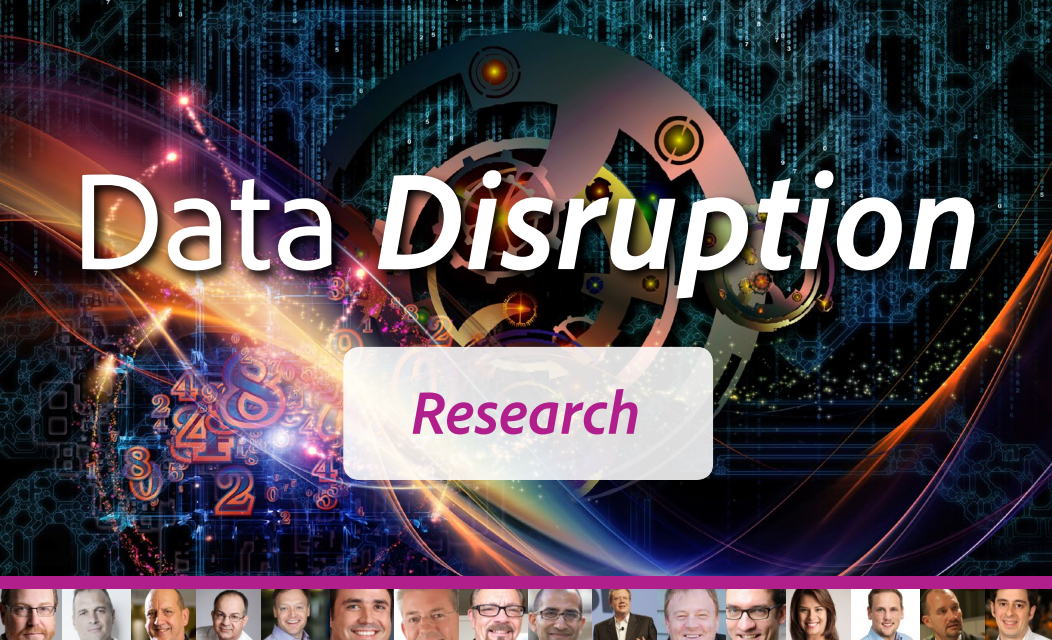The book includes insights from the following experts:
- Jon Schwabish, PolicyViz, Urban Institute, Founder, Senior Researcher and Data Visualization Expert
- Allen Day, Google, Evangelist (Genomics / Cloud)
- Michael Franklin, UC Berkeley, Siebel Professor of Computer Science and AMPLab Director
- Scott Gnau, Hortonworks, CTO
Data Disruption was generously sponsored by Mighty Guides.
It is impossible to ignore the fact that we live in a data-driven civilization. Not only is the amount of data in the world doubling every two years, but the percentage of these data that are becoming valuable because of advanced analytics is also growing. The entire field of data capture and analysis is evolving so rapidly that organizations have difficulty keeping up. Yet data driven business processes, competition, and the rewards of faster and more intelligent operations leave us with no other choice.
For a long time, our ability to capture data outpaced our ability to process it. This meant that large quantities of data were stored in data warehouses until some future time when tools would be available to find value in them or until they were discarded all together. Several things have happened in recent years to change this dynamic. One is the exponential growth in data; the other is the emergence of new platforms and technologies that make it possible to process data sets of almost unlimited size economically while lowering the cost and increasing the speed of analysis. These elements, combined with new analytic techniques and a growing use of machine learning to accelerate analytic methods, is changing almost every aspect of our lives.
To gain a fuller understanding of how modern analytical methods are being used in visible and not-so-visible ways, we approached data analytics experts from many fields and industries. I asked them to contribute essays about their experiences applying big data analytics. This e-book is a compilation of those essays. In it you will find discussions about new analytics technologies, how organizations can more effectively use their data assets, and many interesting use cases. The essays have been grouped into five sections:
- Business Change. Essays in this section speak to how advanced analytics are changing the way businesses operate. It is much more than a story about increased productivity and efficiency: it is a story about the complete transformation of traditional business models into something new and totally data driven.
- Technology Platforms. Essays in this section take a closer look at some of the tools and platforms that are making advanced analytics economical for organizations of all sizes.
- Industry Examples. This section continues the discussion of transformative analytics technologies in the context of specific business and public-sector use cases.
- Research. This section focuses on how new-age analytics are changing the way scientists are conducting research and how they are speeding knowledge acquisition.
- Marketing. This section focuses on advanced, analytics-driven marketing strategies and techniques. These techniques are being used for everything from brand marketing to personalization to public relations to attribution techniques that enable companies to analyze their most effective marketing activities in real time.
It is my hope that assembling knowledgeable insights and experiences from so many different perspectives will provide a valuable glimpse into this rapidly evolving technology. I have found many of these essays both eye-opening and thought provoking. There is no question that advanced analytics will continue to play an increasingly important role in business, government, health care, knowledge acquisition, and a broad spectrum of human endeavor.



